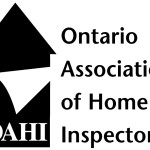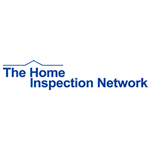
If you’ve watched a few renovation shows, you may think infrared (IR) cameras can see through walls to uncover defects. While this in not the case, an IR camera is still a beneficial tool to have on your home inspection.
History
To understand how infrared cameras work, you must first understand a little about the history of infrared (IR). William Herschel first discovered IR back in 1800. He used a prism to refract light onto a table. While he was measuring the temperatures of the various colors, he realized that the temperature on a thermometer sitting outside of the red light was higher than one inside the light. Upon further study, he concluded that there was infrared energy above the red spectrum. Over 200 years later, we have now taken this knowledge and created cameras that are able to detect this energy and create a thermal image based on that information.
Limitations
In simple terms, IR is the energy emitted by objects based on their temperature. The higher the temperature, the more energy emitted. Everything in the world emits this energy; however some things emit better than others. To make it more complex, there are also objects in the world that act as reflectors. This is where the limitations of the camera can come into play. First, the cameras are not able to “see through” objects but rather the detect surface temperature of objects. A good example is wall framing members that can be seen with the camera because they heat up or cool down differently than the insulation. If the insulation and the studs are the same temperature, then they can’t be seen. Likewise, the camera cannot see water inside a wall; however, it may be able to detect the temperature difference caused by the evaporation of that water. The camera also can’t see through objects such as windows, or tell the true temperature of shiny metals or other reflective objects. This is because they have a very low emittance and would rather reflect the environments energy than emit theirs.
Another important limitation of an IR camera is the environmental conditions during the inspection. The ideal conditions for an IR camera would be a day with no wind, no sun, an outside temperature 10° Celsius higher or lower than the inside temperature, and when it had rained a few days prior to the inspection. As you can see the perfect conditions are nearly impossible to achieve.
Benefits
So you may be asking yourself, “If IR can’t be used to see through my walls, and has environmental limitations, what good is it for my house?”. While an IR camera is limited it can improve the odds of detecting deficiencies that would have not been found otherwise. It will help the inspector with areas that are difficult to reach such as raised ceilings or attic spaces. It can show moisture leaks or infiltration where there is no staining on the walls. Other deficiencies a thermal camera can detect include (but not limited to):
- Foundation water leaks
- Shower stall leaks
- Moisture intrusion
- Inadequate or missing insulation
- Air Leaks
- Duct leaks
- Electrical Issues


